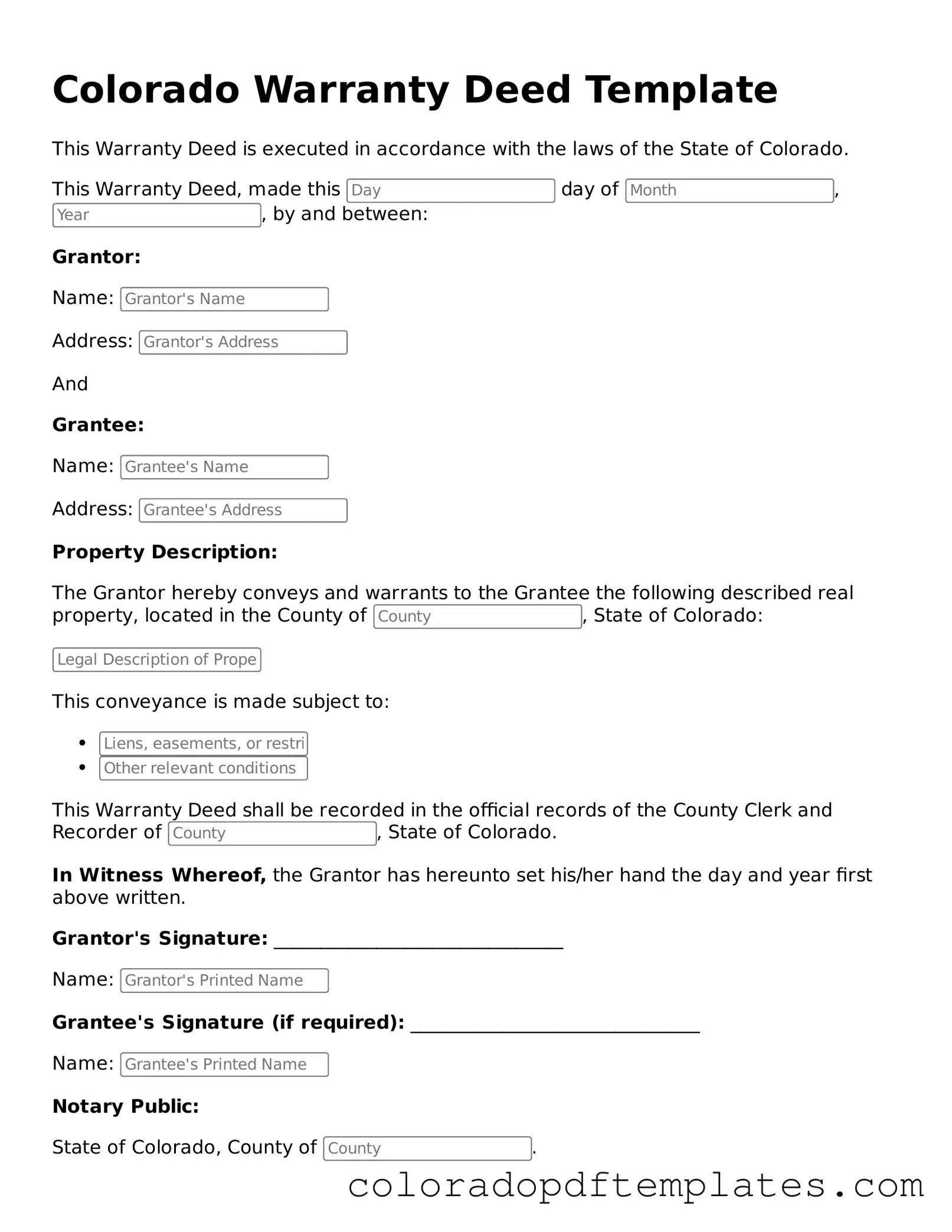A Colorado Deed form is a legal document used to transfer ownership of real property from one party to another within the state of Colorado. This form serves as proof of the change in ownership and is essential for recording the transaction with the county clerk and recorder. There are different types of deeds, including warranty deeds, quitclaim deeds, and special warranty deeds, each serving distinct purposes and offering varying levels of protection to the parties involved.
To properly complete a Colorado Deed form, the following information is typically required:
-
Grantor Information:
The name and address of the person or entity transferring the property.
-
Grantee Information:
The name and address of the person or entity receiving the property.
-
Property Description:
A detailed description of the property, including its legal description, which can usually be found in previous deeds or property records.
-
Consideration:
The amount of money or value exchanged for the property, which must be stated in the deed.
-
Signatures:
The grantor must sign the deed, and in some cases, the grantee may also need to sign.
Additional information may be required depending on the specific type of deed being used and the circumstances of the transfer.
Once the Colorado Deed form is completed and signed, it must be filed with the county clerk and recorder in the county where the property is located. Here are the steps to follow:
-
Make several copies of the completed deed for your records.
-
Visit the county clerk and recorder's office, or check if they offer online filing options.
-
Submit the original deed along with any required filing fees. Fees may vary by county.
-
Request a stamped copy of the deed for your records once it has been recorded.
Filing the deed ensures that the transfer of ownership is officially recognized and protects the rights of the new property owner.
Yes, there can be tax implications associated with transferring property through a Colorado Deed form. The most notable tax is the Colorado Documentary Fee, which is assessed on the transfer of real property. This fee is based on the sale price of the property and must be paid at the time of recording the deed. Additionally, if the property is sold, capital gains tax may apply depending on the profit made from the sale. It is advisable to consult with a tax professional or legal expert to understand the full scope of tax obligations related to property transfers in Colorado.
